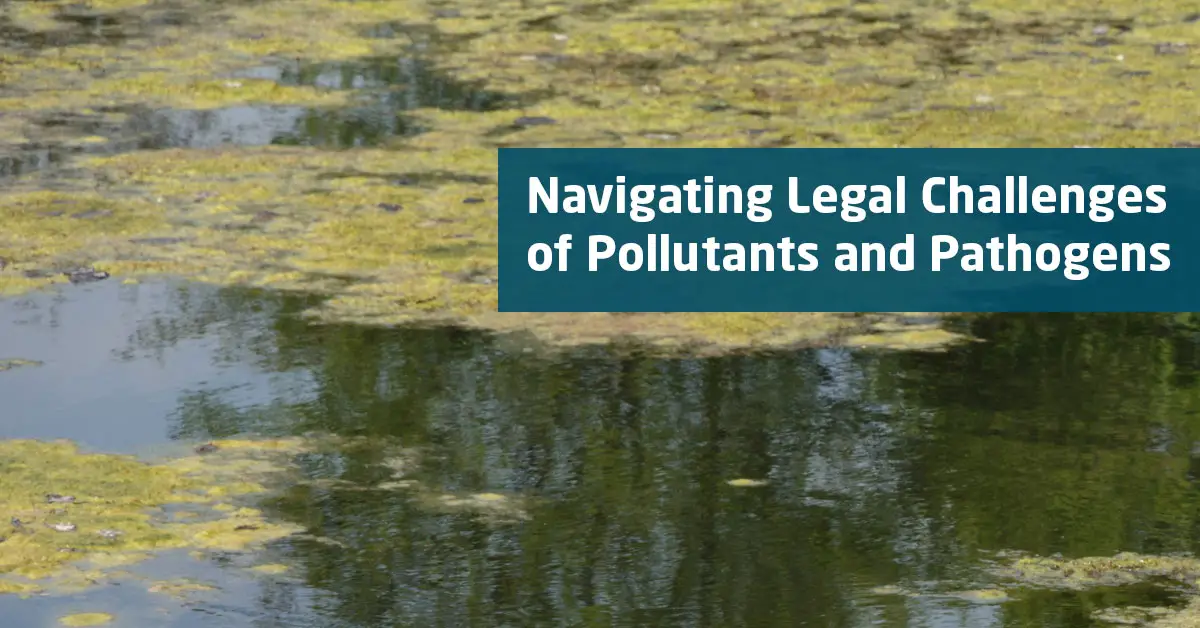In today’s modern world, pollutants and pathogens pose significant hurdles to public health, environmental sustainability, and regulatory compliance. From industrial emissions to microbial contaminants, the presence of pollutants and pathogens in our air, water, and soil can have widespread consequences for human health and the environment.
Understanding the legal landscape surrounding pollutants and pathogens is crucial for effective management and mitigation strategies. In this comprehensive guide, we’ll delve into the regulatory framework, liability issues, and remediation strategies associated with pollutants and pathogens.
Understanding Regulatory Frameworks
The management of pollutants and pathogens is governed by a complex array of local, national, and international laws, regulations, and guidelines. Environmental protection agencies play a pivotal role in enforcing laws concerning air quality, water quality, waste management, and public health. These agencies establish emission standards, water quality criteria, and waste disposal regulations aimed at safeguarding human health and the environment.
Additionally, international agreements like the Paris Agreement and the Stockholm Convention provide a global framework for addressing pollution issues across borders.
Addressing Liability and Responsibility
Assigning liability for pollution and pathogen contamination can be a contentious process involving various stakeholders, including polluters, property owners, regulatory agencies, and affected communities. In instances of industrial pollution, responsibility may lie with the company responsible for the release of pollutants, as well as contractors and suppliers involved in the operations.
Property owners can also be held accountable for contamination on their premises, especially if they knowingly allowed improper discharge or disposal of pollutants. Regulatory agencies have the authority to enforce compliance with environmental laws and impose penalties on violators.
Implementing Effective Remediation Strategies
Remediating pollutants and pathogens demands a comprehensive approach that tackles the contamination source, affected media (air, water, soil), and potential risks to human health and the environment. Remediation strategies may encompass containment, removal, treatment, and proper disposal of contaminated materials, alongside the restoration of impacted ecosystems. In cases of microbial contamination, disinfection measures are essential to eradicate pathogens and prevent the spread of diseases. Compliance with regulatory standards is crucial to ensure the efficacy of remediation efforts and safeguard public health and the environment.
Examining Case Studies
Several notable cases underscore the legal complexities surrounding pollutants and pathogens. The Flint water crisis shed light on lead contamination in drinking water, prompting discussions on government accountability and environmental justice.
Similarly, the Deepwater Horizon oil spill led to significant environmental damage and legal disputes regarding liability and compensation for affected communities and ecosystems. These incidents emphasize the importance of proactive measures to prevent pollution and mitigate its repercussions, as well as the necessity of robust legal frameworks to address environmental crises and hold polluters accountable.
Conclusion: Working Towards Sustainable Solutions
Addressing the legal challenges posed by pollutants and pathogens necessitates collaborative efforts among governments, industries, communities, and stakeholders.
By gaining insights into the regulatory framework, liability issues, and remediation strategies associated with pollutants and pathogens, we can strive towards sustainable solutions that safeguard public health, preserve natural resources, and promote environmental justice. Collaboration, transparency, and accountability are pivotal in navigating the legal complexities of pollutants and pathogens, paving the way for a cleaner and healthier future for all.
Questions and Answers:
Q1: What are the key regulatory frameworks governing pollutants and pathogens? A1: The regulatory landscape is governed by local, national, and international laws focusing on air quality, water quality, waste management, and public health.
Q2: Who can be held liable for pollution and pathogen contamination? A2: Liability may extend to polluting companies, property owners, regulatory agencies, and even affected communities, depending on the circumstances.
Q3: What strategies are employed for remediating pollutants and pathogens? A3: Remediation strategies include containment, removal, treatment, and disposal of contaminated materials, alongside ecosystem restoration and disinfection measures.
Q4: What are some notable case studies highlighting legal complexities in this area? A4: The Flint water crisis and the Deepwater Horizon oil spill serve as poignant examples, shedding light on issues of accountability and environmental justice.
Q5: How can stakeholders work towards sustainable solutions amidst legal challenges? A5: Collaboration, transparency, and accountability are essential for navigating legal complexities, promoting public health, and preserving the environment.

